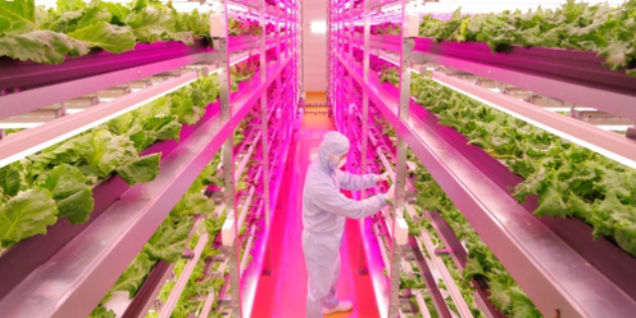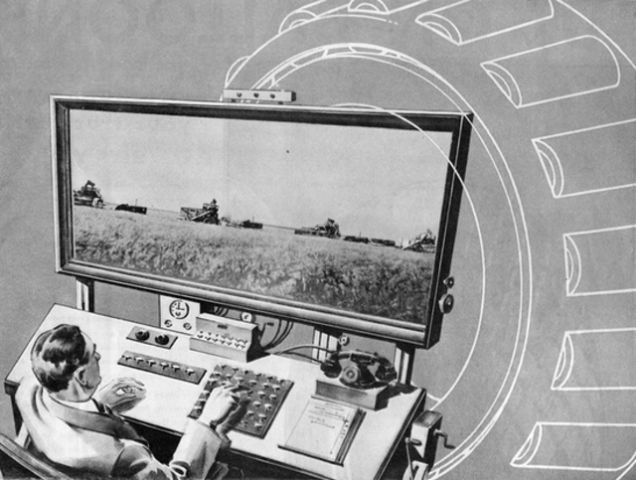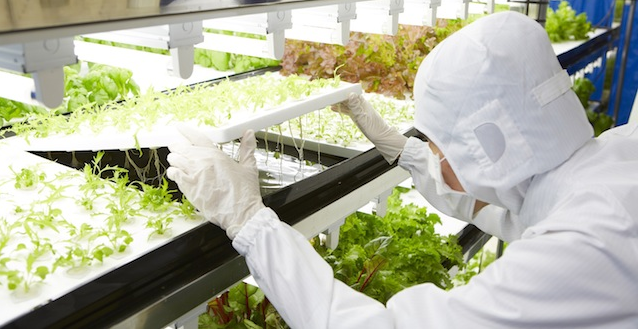In a factory that once made floppy disks, herbs are growing. Inside an old semiconductor factory, there’s lettuce taking root. Oddly enough, electronics factories make great farms. And Toshiba, Sony and Panasonic are swapping industrial infrastructure for a business that’s as old as civilisation itself.
Today, Toshiba announced that inside a huge building in Yokosuka, there’s produce taking root: lettuce, baby leaves, spinach, mizuna and sprouts, for starters. But this isn’t your run-of-the-mill indoor farm. It’s built inside of a long-abandoned factory that once made semiconductors for the company, a specialised building that is unique to the electronics industry. Toshiba can control everything from the wavelength of the light to the way air flows through the building — after all, semiconductors are fragile things.
What good will this manufacturing infrastructure do for batch of sprouts? You’d be surprised. Toshiba’s new rig is a so-called “clean farm.” It’s operating under what the company calls “near-sterile” conditions. For every 1000 germs on the lettuce in your backyard garden, these plants have one. They’re grown in conditions that verge on aseptic.
There’s a very good reason for growing plants in “clean rooms”: They last far longer. Without all those pesky germs and other distracting microorganisms, plants can flourish with very little struggle, and they last far longer once they’re harvested. Toshiba wants to sell these crops in supermarkets — to a tune of $US2.7 million a year from this facility, hopefully — so longevity is a major bonus.
The factory farmers
Toshiba is far from the first Japanese tech giant to take a shine to farming, though it is one of the first to experiment with taking the very processes it developed to build computers and apply them to farming. As Japan’s manufacturing economy has slumped and slowed, several other big-name companies have opened up farming operations.

Sharp, for example, is using its LEDs and air purification systems in a new facility in Dubai, where it is growing strawberries to sell to Middle Eastern markets. In August, Panasonic started spinach and radishes from Singapore’s first indoor farm. Sony did something remarkably similar to Toshiba: It turned one of its own semiconductor production plants in Miyagi Prefecture into a farm that reportedly produces 10,000 heads of lettuce every day.
Most of these companies are struggling financially — it would be easy to pass off these projects as attempts at pivoting their existing technologies into the agriculture market. And while it’s true that there’s a potential business in selling these systems to farmers, there’s a very good reason to be interested in the way we get our produce: We waste a huge amount of it every day, and it’s getting harder and harder to grow.
A perpetual future
A new era of technologically-advanced farming has been predicted dozens of times over the last century, as Paleofuture tells us: In the 1920s, electricity would revolutionise agriculture in America. In 1931 — during the Great Depression — remote-controlled farming was presented as the 100-year future of farming in America. In the late ’50s, farmers were controlling their crops from the couch with the push of a button. Even in the ’80s, the notion of technology-enabled leisure amongst rural farmers was still going strong.

Some of those dreams came true, and some of them didn’t. But in just about every case, technology was held up as a way to reduce the level of work needed on the part of the farmer.
Indoor farming in 2014 has more dire wolves nipping at its heels: For one thing, there’s climate change making farmable land more scarce in critical parts of the world. For another, there’ the issue of feeding booming cities, which will only grow larger while farmlands are pushed further out from the urban fabric. Then there’s the issue of proximity and efficiency: Because farms are further away from cities and because they don’t always use the most efficient growing and watering systems, plenty of produce arrives too damaged or old to sell.
So indoor farming is not simply the latest iteration of a forever-just-out-of-reach future. It’s a solution to a problem creeping slowly but steadily up on us — and when it finally knocks on our door, more than few tech companies want to be ready to sell us the solution.
